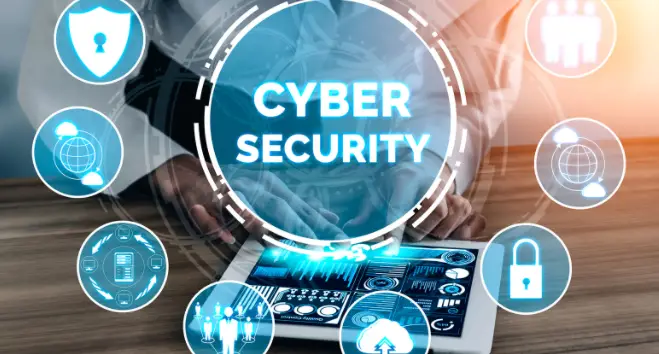5 Reasons Why Cybersecurity Is Important

1 – ALL PEOPLE ARE AFFECTED BY CYBERATTACKS
Cyberattacks are now so frequent that according to recent estimates, a device in the United States is hacked every 39 seconds! Millions of citizens may be injured if an attack occurs. State-run institutions may be shut down, and residents may be denied services. The city of Atlanta, for example, was targeted by the notorious SamSam ransomware. The attackers demanded $51,000 in ransom. The SamSam ransomware was so dangerous that it knocked Atlanta off the grid for five days. Several major citywide activities were suspended as a result of this. It ended up costing $17 million to recover. Every single day, ransomware is used to hack over 4000 businesses. Click here to find more information on different types of cyberattacks.
Hackers can infiltrate government institutions on a global scale, resulting in cyberattacks. The National Cyber Security Centre (NCSC) has issued a warning to companies and people around the world that Russia is attempting to hack network infrastructure devices such as routers. The aim is to set the stage for potential attacks on vital infrastructure including power plants and energy grids.
It is such a threat that nuclear power plants might be threatened, resulting in a nuclear catastrophe that would kill millions of people. Stuxnet, a malicious computer worm, was used to target one of Iran’s nuclear facilities, destroying one-fifth of the country’s nuclear centrifuges. These cyber worms caused centrifuges to overheat, potentially resulting in an explosion that claimed human lives.
2 – FAST TECHNOLOGICAL CHANGES Would Trigger A BOOM IN CYBERATTACKS
Through the introduction of the 5G network. “5G networks thus establish a massively extended, multidimensional cyberattack vulnerability,” according to The Brookings Institute. This re-imagined existence of networks—a modern network “ecosystem of ecosystems”—requires a re-imagined cyber strategy. According to the study, with the rise of software cyber vulnerabilities, it will be challenging for organisations to retool how they protect the world’s most valuable network in the twenty-first century.
Better cyberattack technology that can automate the attack.
The introduction of new technology such as the Internet of Things (IoT) is exponentially rising the number of connected devices, with an estimated 200 billion by the end of 2020. Hackers can now use artificial intelligence and machine learning to launch automated cyberattacks that can easily breach protected networks without the need for human interaction, whereas cyberwarriors are improving their skills. These automated cyberattacks are a global concern and can be carried out in large numbers.
Cloud computing can be used more often.
Cybersecurity solutions for public cloud and “as a service” accelerated in the first quarter of 2019, according to Canalys’ new global market report. Year over year, those deployment models increased by 46 percent. As agencies increase their use of cloud computing, the GAO finds cybersecurity risks. The Office of Management and Budget (OMB) needs federal agencies to use the Federal Risk and Authorization Management Program (FedRAMP) to authorise their use of cloud computing services.
3 – LOSS OF JOBS AND DAMAGE TO BUSINESSES
In recent years, there has been an increase in the number of attacks and breaches involving well-known brands. It is costing millions of dollars in penalties in order to recover the data and pay fines. Due to the company’s cost-cutting efforts, not only C-level executives but also associates could lose their jobs as a result of these expenses.
Here are a few examples:
Over $540 million usage data were revealed to Amazon’s cloud storage service by Facebook, the social media behemoth.
Equifax, a multinational credit reporting service, suffered a massive data breach that impacted $147 million consumers. The cost of repairing the damage caused by the hack was recently reported to be $439 million.
A data breach at First American Corporation exposed $885 million documents, including bank account information, social security numbers, wire transfers, and mortgage paperwork.
The NHS in the United Kingdom was briefly brought to its knees by a rudimentary ransomware attack, resulting in cancelled operations and significant clean-up costs.
Yahoo, the internet behemoth, suffered a data breach that affected every single one of its 3 billion user accounts. The hack cost about $350 million in direct costs.
4. INDIVIDUALS FACE 4 CYBERSECURITY THREATS
Not only are nations and companies at risk from hackers’ acts and motives, but individuals are also at risk. Identity theft, in which hackers steal a person’s personal information and sell it for profit, is a major problem.
This often jeopardises an individual’s and his or her family’s personal protection. This has occurred on many occasions, costing the victim millions of dollars. In other cases, after stealing their identity, hackers use bribery and extortion to demand ransom money in exchange for not taking any further action. This is particularly true in cases of high-profile identity theft involving celebrities or high-net-worth individuals. Hackers have targeted home security cameras like the Ring, invading other people’s privacy. This raises serious privacy issues, as hackers can communicate with people who live inside the house and demand ransom.
5 – INCREASED REGULATIONS AND LEGISLATION Could RESULT FROM CYBER CONCERNS.
As the threat of cyber-attacks grows, new legislation may be enacted to protect consumers from future attacks. As a result, more rules and legislation will be enacted in the near future. The perpetrators of the assault should face harsher punishments. Citizens must be informed of new legislation to ensure that their companies abide by them.
